Welcome to Matrix Education
To ensure we are showing you the most relevant content, please select your location below.
Select a year to see courses
Learn online or on-campus during the term or school holidays
Learn online or on-campus during the term or school holidays
Learn online or on-campus during the term or school holidays
Learn online or on-campus during the term or school holidays
Learn online or on-campus during the term or school holidays
Learn online or on-campus during the term or school holidays
Learn online or on-campus during the term or school holidays
Get HSC exam ready in just a week
Select a year to see available courses
Science guides to help you get ahead
Science guides to help you get ahead

Prepare for your next vector and dot product operations test with this guide! We will discuss vector addition, subtraction, scaling, multiplication and dot products.
A worksheet to test your knowledge. Fill out your details below to get this resource emailed to you. "*" indicates required fields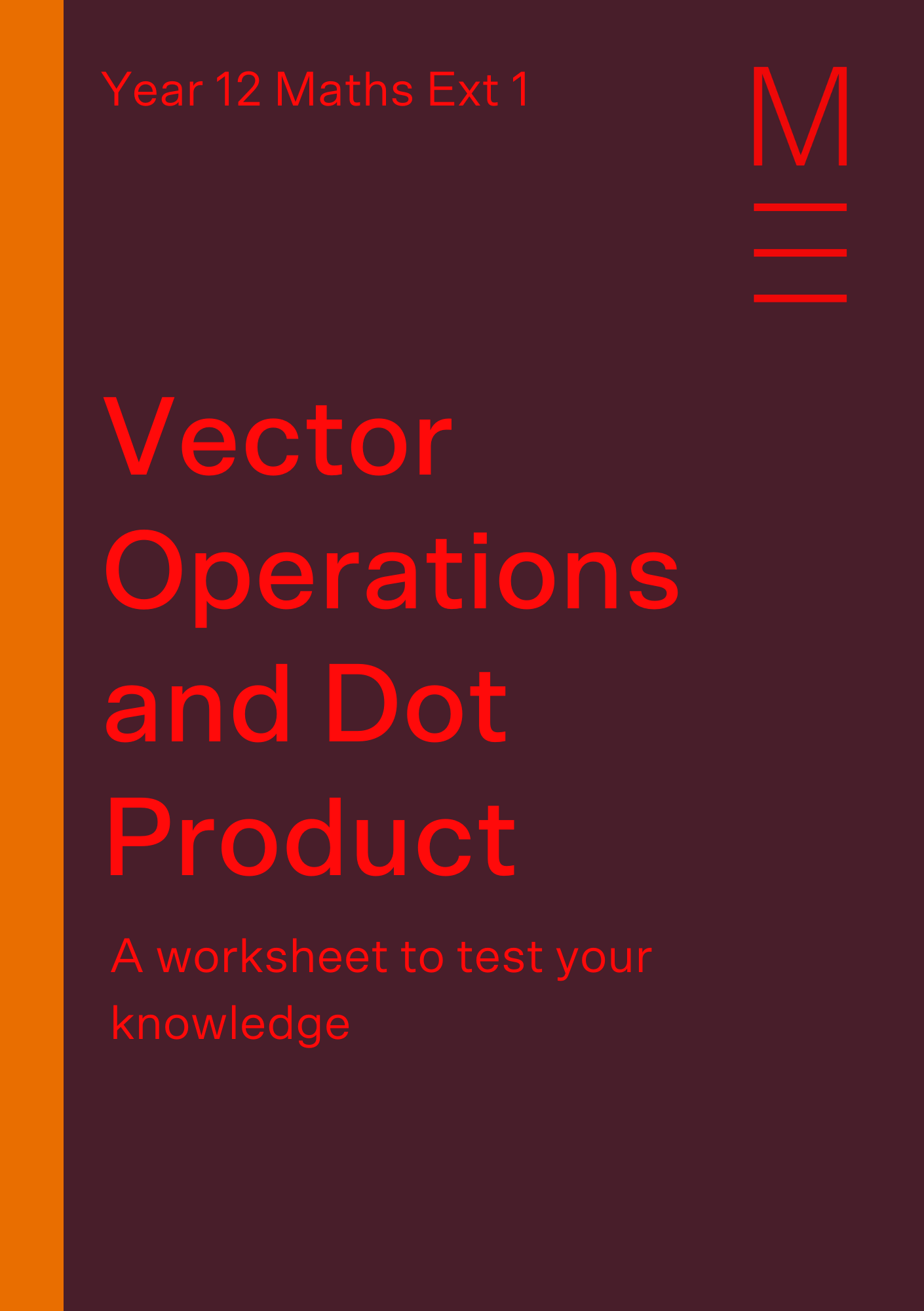
Free Y12 Maths Ext1 Operations with Vector and Dot Product Download

Free Y12 Maths Ext1 Operations with Vector and Dot Product Download
The topic of Vectors involves both an algebraic and geometric representation of a quantity that includes both a magnitude and direction.
An understanding of vectors enables students to understand how to represent objects in two-dimensional space and is used extensively in many fields of study, including engineering, physics and mathematics.
In this section, we examine the different operations (addition, subtraction and scalar-vector multiplication) of vectors in both algebraic and geometric terms and explore the dot product of two vectors.
Students should be proficient in the following outcome after studies in this topic:
ME-V1.1 Introduction to Vectors
ME-V1.2 Further operations with vectors
Students should have a basic introductory understanding of vectors and how they are represented.
The process of vector addition must consider both the magnitude and direction of the vectors involved.
There are three methods to add vectors:
Students are welcomed to utilise the method they prefer as they all yield the same result
Given 2 vectors \( a \) and \( b \), we would like to perform \( a + b \)
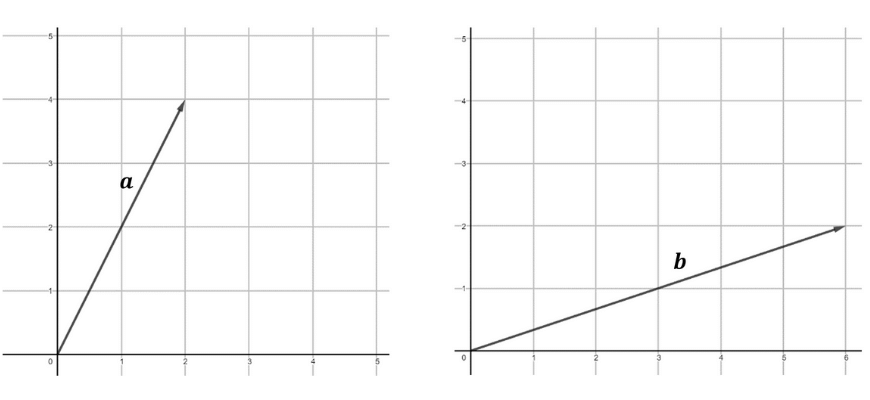
Step 1: Sketch vector \( a \)
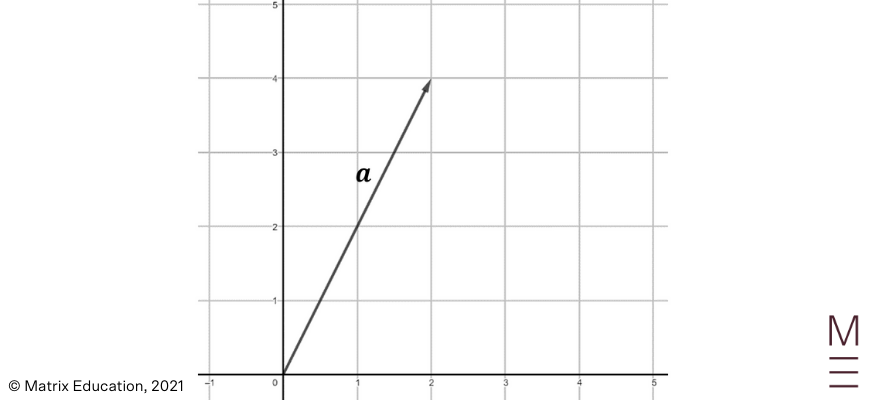
Step 2: Position vector \( b \) such that its tail is on the tip of \( a \).
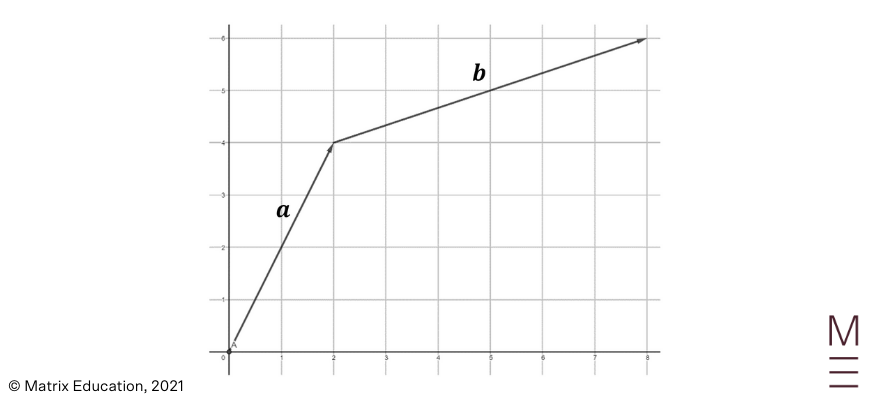
Step 3: Connect the tail of vector \( a \) to the tip of vector \( b \). This vector is known as the resultant vector and represents the sum \( a + b \)
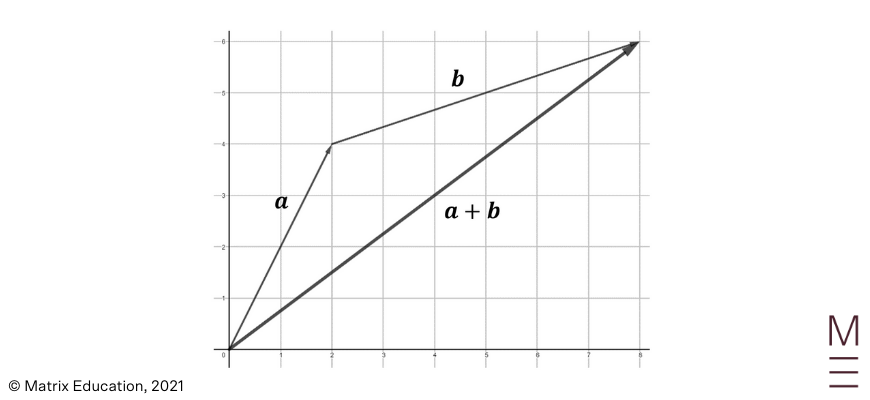
When adding two vectors, we can also use a method known as the Parallelogram Law of Addition. This method is essentially the same as tip to tail addition, except now a parallelogram is drawn.
We can also observe from this example that the commutative laws of addition also applies to vectors, such that \( a + b = b+ a \). This illustrates that the order in which you add the vectors are not important and will product the same resultant vector.

When attempting to add more than two vectors, we can repeatedly use tip to tail addition to produce our resultant vector.
As shown below, the addition may look different depending on the order you sum the vectors in, however, the resultant vector will always be the same.
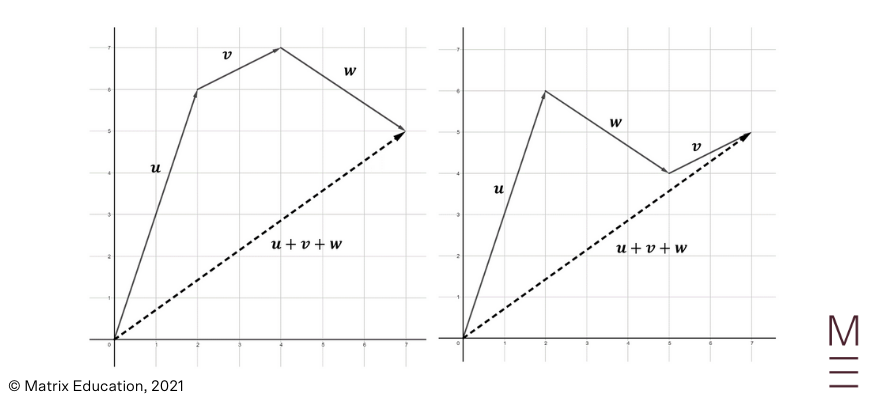
To subtract a vector, you must add the negative of the vector (using the Tip to Tail method). Mathematically, this can be represented as:
\begin{align*}
u-v = u+(-v)
\end{align*}
Consider the following two vectors \( a \) and \( b \).
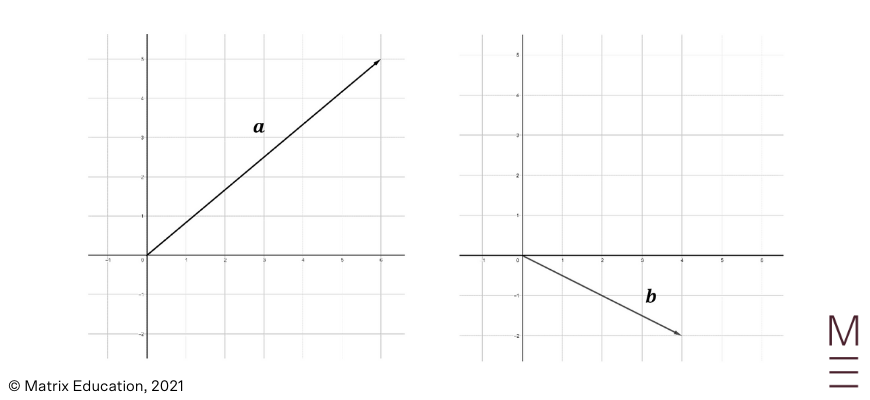
To produce \( a-b \), we must now add vector \( a \) with vector \(-b \)
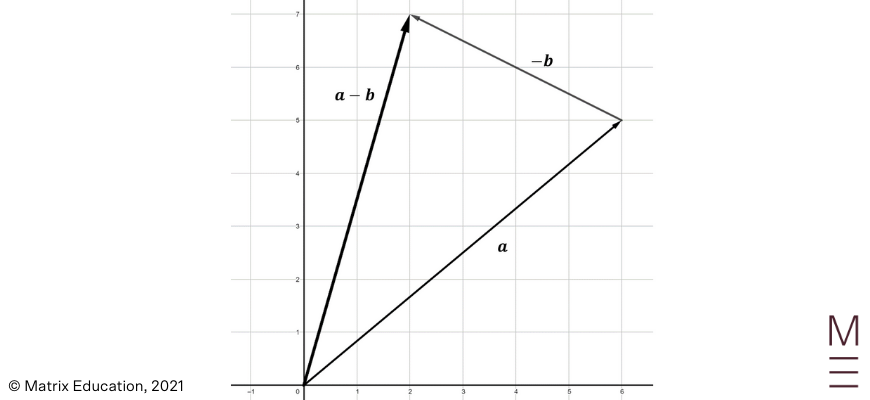
Vectors can also be scaled to become shorter, longer or have its direction reversed. A vector \( v \) can be scaled by a scalar quantity \( \alpha \) to produce the resultant vector \( \alpha v \).
A few examples are shown below.
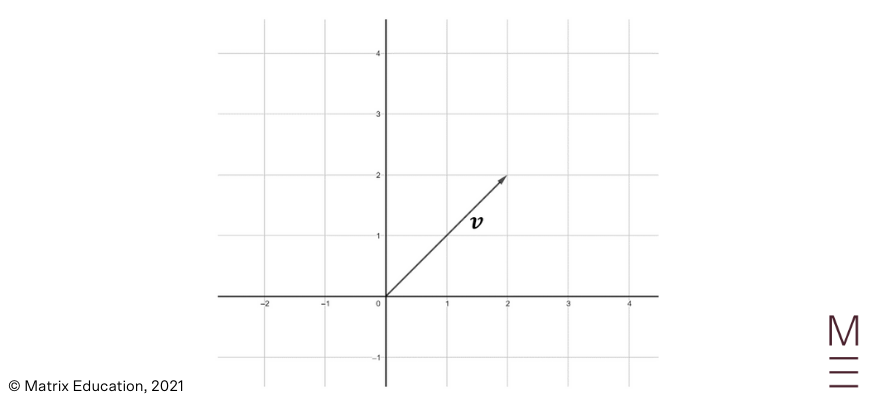
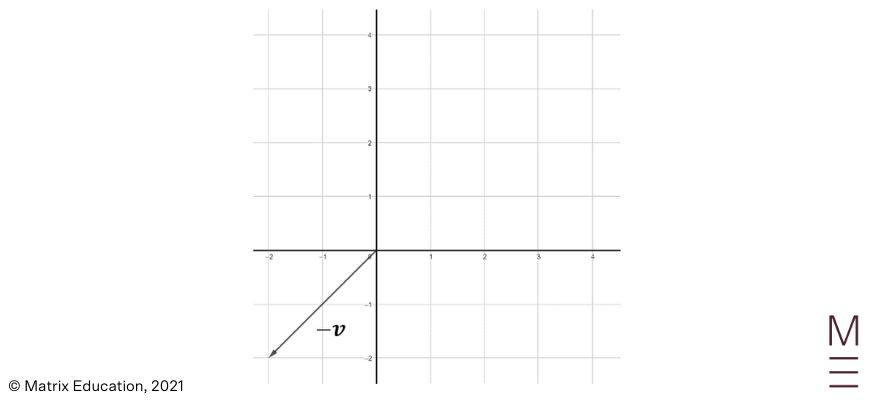
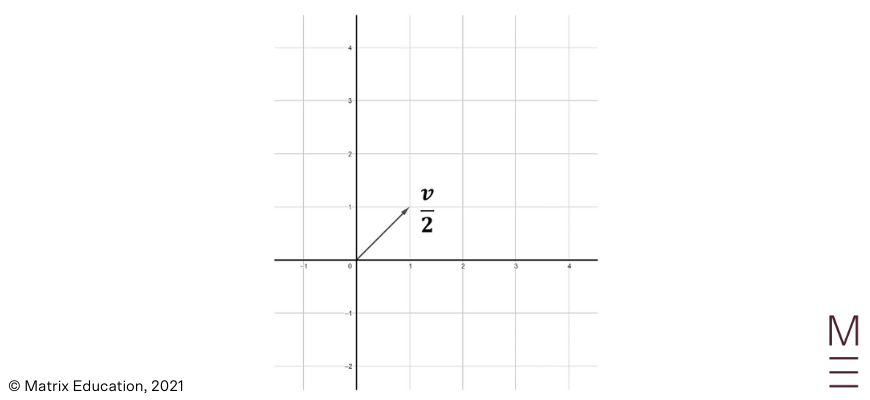
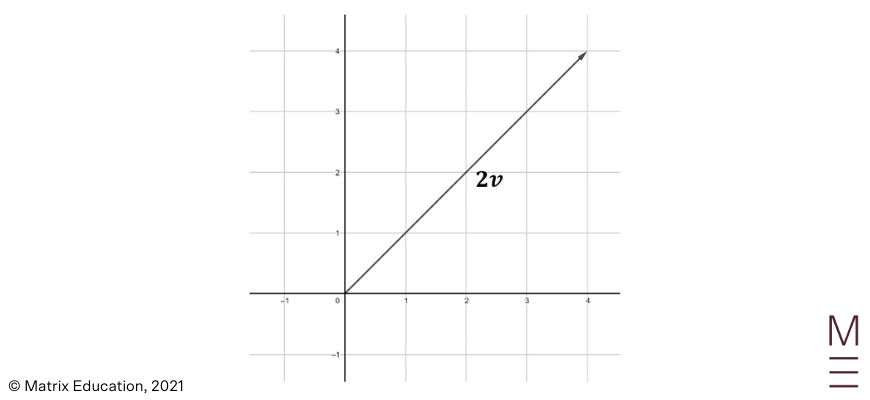
As you may know, vectors can also be represented algebraically as a column vector as shown below.
Vectors represented in this form is very similar to the coordinate geometry form students are familiar with, with the exception that rather it being a point, it is a vector with the tail placed at the origin.
\begin{align*}
v = \big{(} ^{x}_{y} \big{)}
\end{align*}
Where \( x \) is the ‘\( x \) component’ of \( v \) and \( y \) is the ‘\( y \) component’ of \( v \)
Writing out our vectors in algebraic form allows us to easily compute the addition, subtraction and scaling of vectors. For 2 vectors \( u \) and \( v \), we can perform vector addition as follows:
\begin{align*}
u = \big{(} ^{a}_{b} \big{)} &, \ \ v = \big{(} ^{c}_{d} \big{)} \\
u + v = \big{(} ^{a}_{b} \big{)} &+ \big{(} ^{c}_{d} \big{)} \ = \ \big{(} ^{a + c}_{b + d} \big{)}
\end{align*}
Likewise, for 2 vectors \( u \) and \( v \), we can perform vector subtraction as follows:
\begin{align*}
u = \big{(} ^{a}_{b} \big{)} &, \ \ v = \big{(} ^{c}_{d} \big{)} \\
u – v = \big{(} ^{a}_{b} \big{)} &- \big{(} ^{c}_{d} \big{)} \ = \ \big{(} ^{a – c}_{b – d} \big{)}
\end{align*}
Similarly, for a vector \( v \), we can scale the vector by a constant \( \alpha \) as follows:
\begin{align*}
v = \big{(} ^{c}_{d} \big{)} \
\alpha v = \alpha \big{(} ^{c}_{d} \big{)} = \ \big{(} ^{ \alpha c}_{ \alpha d} \big{)}
\end{align*}
This process is also known as scalar-vector multiplication.
Previously, we have learnt how to multiply a vector by a scalar, known as scalar-vector multiplication. This section guides you on how to multiply two vectors together, known as the dot product of vectors.
Given two vectors \( u= \big{(} ^{a}_{b} \big{)} \) and \( v= \big{(} ^{c}_{d} \big{)} \), the dot product \( u \cdot v \) is defined as:
\begin{align*}
u \cdot v = ac+bd
\end{align*}
Note: The dot product of two vector produces a scalar number, not a vector.
Let \( u, \ v \) and \( w \) be three vectors. Then:
It does not matter which vector is ordered first.
\begin{align*}
u \cdot v \ = \ v \cdot u
\end{align*}
\begin{align*}
u \cdot (v+w) \ = \ v \cdot u + u \cdot w
\end{align*}
The order in which you perform the scalar multiplication does not matter.
\begin{align*}
\alpha ( u \cdot v ) \ = \ ( \alpha u ) \cdot v
\end{align*}
\begin{align*}
u \cdot u \ = | u |^{2}
\end{align*}
1. Consider the following vectors \( a \) and \( b \)
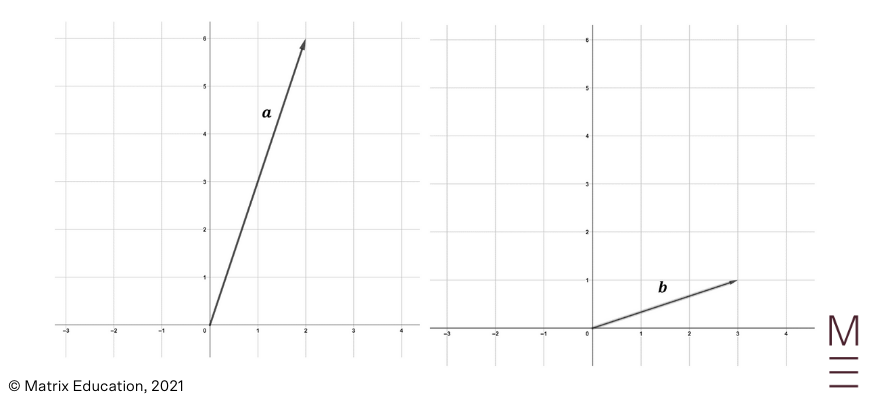
Draw each of the following vectors:
a. \( a+b \)
b. \( a-b \)
c. \( -2b+a \)
2. Consider the following vectors
\begin{align*}
a= \big{(} ^{2}_{8} \big{)} , \ \ b= \big{(} ^{-4}_{3} \big{)}, \ \ c= \big{(} ^{5}_{2} \big{)}
\end{align*}
Compute the following:
a. \( a+b \)
b. \( a-c \)
c. \( 3a \)
d. \( a+4b-c \)
3. Consider the following vectors
\begin{align*}
a= \big{(} ^{4}_{2} \big{)}, \ \ b= \big{(} ^{-4}_{-2} \big{)}, \ \ c= \big{(} ^{3}_{7} \big{)}
\end{align*}
Compute the following:
a. \( a \cdot b \)
b. \(c \cdot (a+b) \)
c. \( 5(a \cdot c) \)
1.
a.
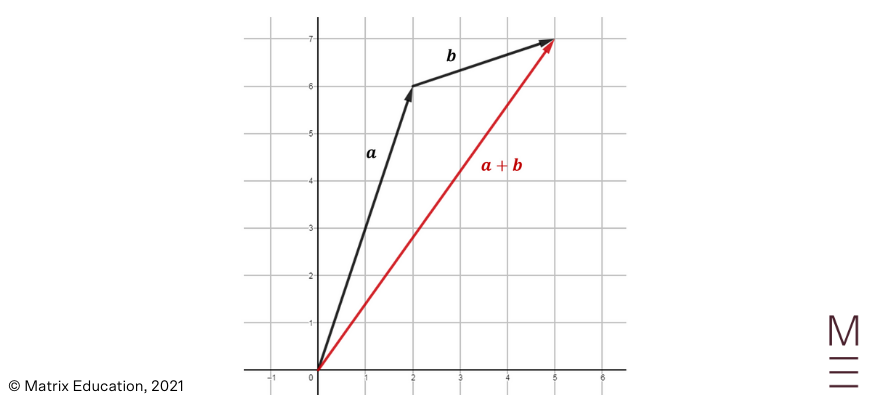
b.
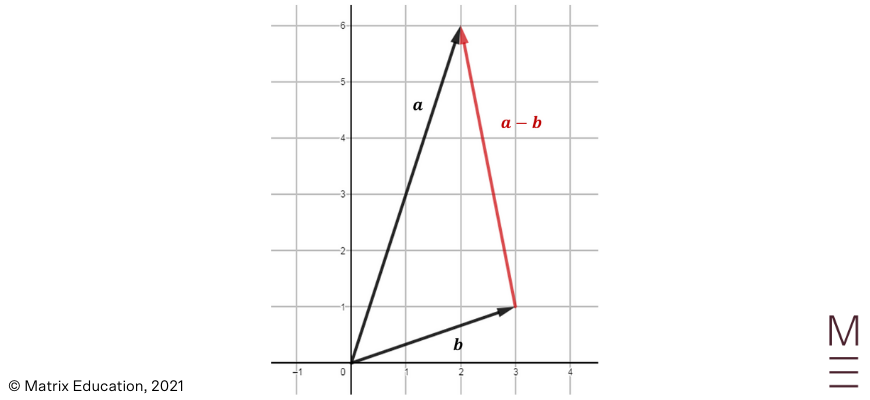
c.
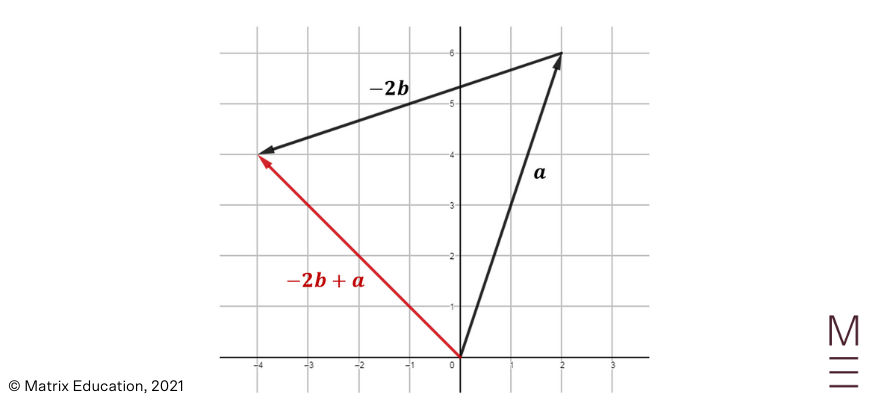
2.
a. \( a+b= \big{(} ^{2}_{8} \big{)} + \big{(} ^{-4}_{3} \big{)} = \big{(} ^{-2}_{11} \big{)} \)
b. \( a-c= \big{(} ^{2}_{8} \big{)} – \big{(} ^{5}_{2} \big{)} = \big{(} ^{3}_{6} \big{)} \)
c. \( 3a= 3 \big{(} ^{2}_{8} \big{)} = \big{(} ^{6}_{24} \big{)} \)
d. \( a+4b-c = \big{(} ^{2}_{8} \big{)} + 4 \big{(} ^{-4}_{3} \big{)} – \big{(} ^{5}_{2} \big{)} = \big{(} ^{-19}_{18} \big{)} \)
3.
a.
\begin{align*}
a \cdot b &= \big{(} ^{4}_{2} \big{)} \cdot \big{(} ^{-4}_{-2} \big{)} \\
&= 4 \times -4+2 \times -2 \\
&= -16-4 \\
&= -20
\end{align*}
b.
\begin{align*}
c \cdot (a+b) &= \big{(} ^{3}_{7} \big{)} \cdot \big{(} ^{4}_{2} \big{)} +\big{(} ^{-4}_{-2} \big{)} \\
&=\big{(} ^{3}_{7} \big{)} \cdot \big{(} ^{0}_{0} \big{)} \\
&= 0
\end{align*}
In our HSC Prep Course, our subject matter experts will break down a year’s worth of Maths content through structured video lessons and provide you with plenty of practice questions and mock exams. Learn more about our HSC Prep Course now.
Ace Maths Ext 1 with Matrix+
Expert teachers, weekly quizzes, one-to-one help! Learn at your own pace, wherever you are.
© Matrix Education and www.matrix.edu.au, 2023. Unauthorised use and/or duplication of this material without express and written permission from this site’s author and/or owner is strictly prohibited. Excerpts and links may be used, provided that full and clear credit is given to Matrix Education and www.matrix.edu.au with appropriate and specific direction to the original content.